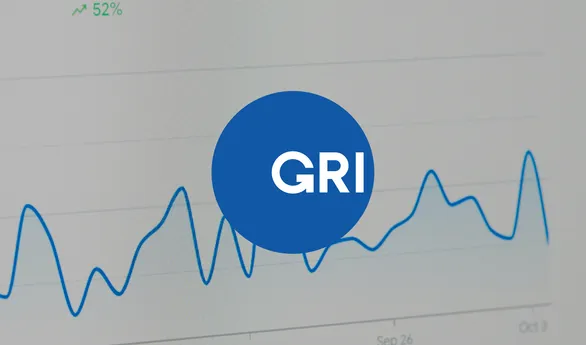Every company has a role to play in mitigating global warming by reducing greenhouse gas emissions and slowing the rise in Earth’s temperatures.
Understanding your business’s carbon footprint enables you to grasp the full extent of your company’s environmental impact. It helps identify the primary sources of greenhouse gas emissions within your operations, allowing you to target these areas for improvement and implement strategies to reduce them.
Secondly, with increasing regulatory requirements and consumer demand for sustainable practices, having a clear picture of your emissions is vital for compliance and maintaining a competitive edge.
Understanding your carbon footprint also helps you communicate your sustainability efforts transparently to stakeholders, including investors, customers, and employees, thereby enhancing your brand’s reputation.
Finally, it equips you with the data needed to make informed decisions about resource efficiency and cost savings, ultimately contributing to both environmental stewardship and the long-term success of your business.
How do you set the scope of measurement?
The first step in calculating your business’s carbon footprint is to define the scope of carbon dioxide emissions to be measured. Emissions are typically categorized into three scopes:
- Scope 1 (Direct Emissions): These are emissions from sources that are owned or controlled by the company, such as company vehicles, manufacturing facilities, and any onsite fuel combustion.
- Scope 2 (Indirect Emissions from Energy): These emissions result from the consumption of purchased electricity, heat, steam, or cooling. Although these emissions occur at the utility provider, they are accounted for in the business’s carbon footprint.
- Scope 3 (Other Indirect Emissions): These include all other indirect emissions that occur in the company’s value chain, such as those from the production of purchased goods and services, waste disposal, and employee commuting.
While Scope 1 and Scope 2 are often mandatory in reporting frameworks, Scope 3 currently isn’t mandatory in most reporting frameworks. It can be challenging to measure but it represents the largest portion of most business’ carbon footprints.
How do you map Scope 3 emissions?
Scope 3 emissions can be particularly complex as they encompass a wide range of indirect activities, contributing significantly to carbon emissions. That’s why accurate supply chain mapping is essential. This process involves:
- Identifying relevant emission sources: This includes emissions from the production and transportation of raw materials, outsourced activities, waste generation, and the use of sold products.
- Collecting data: Businesses need to gather data from suppliers and partners. This can include requesting emissions data or using industry averages where direct data is unavailable.
- Engaging suppliers: Collaborating with suppliers to understand and reduce their emissions is crucial. Many companies now include sustainability criteria in their procurement processes.
Mapping Scope 3 emissions not only helps in understanding the full extent of a business’s carbon footprint but also identifies opportunities for reducing emissions across the value chain, contributing to a smaller overall environmental footprint.
How do you build a carbon inventory?
Almost every carbon footprint methodology begins with a comprehensive carbon inventory, which is essential for tracking progress and establishing reduction targets. This involves setting a baseline year and choosing emission factors:
- Setting a baseline year: The baseline year is a reference year against which future emissions reductions are measured. It should be a representative year with complete and reliable data. Any significant changes in business operations, such as mergers or acquisitions, require recalculating the baseline to maintain consistency.
- Choosing emission factors: Emission factors are used to convert activity data into emissions estimates. For example, these factors can translate energy consumption (in kWh) into CO2 equivalents. Selecting appropriate and up-to-date emission factors is crucial for accuracy.
Businesses should also implement a quality control system to ensure the data’s reliability. This includes periodic audits and reviews of the data collection processes and emission calculations.
Carbon accounting platforms can significantly simplify the process of measuring and managing a business’s carbon footprint. These platforms offer:
- Data collection and analysis: They streamline the collection of data from various sources, including utility bills, fuel consumption records, and supplier reports.
- Calculation of emissions: Platforms often include built-in calculators that use standardized emission factors to compute total GHG emissions across Scopes 1, 2, and 3.
- Reporting and visualization: They provide tools for generating reports and visualizing data, helping businesses track their progress over time and communicate it to stakeholders.
- Regulatory compliance: These platforms help ensure compliance with regulations and standards like the GHG Protocol, CSRD, SFDR and others.
In addition to measuring your business’ carbon footprint, these platforms can also track various environmental indicators, such as your company’s ecological footprint and water footprint, providing a more comprehensive view of environmental impacts.
In addition to business emissions, some platforms can also help track employee’s personal carbon footprints, encouraging individual responsibility and action towards reducing overall emissions. Understanding personal carbon footprints helps individuals recognize the impact of their lifestyle choices and consumption habits on the environment.
By leveraging these tools, businesses can reduce the complexity and potential for errors in carbon accounting, allowing them to focus on strategic sustainability initiatives.
Selecting the appropriate carbon accounting platform is crucial for effective GHG management. Energy efficiency is a key consideration in selecting a platform, as it plays a significant role in reducing emissions and promoting sustainability. Considerations include:
- Ease of use: The platform should be user-friendly, with intuitive interfaces and support resources.
- Data integration: It should easily integrate with existing systems and data sources, facilitating seamless data collection and management.
- Scalability: The platform should accommodate the growing needs of your business, including expanding the scope of emissions tracking as your sustainability initiatives evolve.
- Compliance and standards: Ensure the platform supports relevant reporting standards and frameworks your organization must adhere to.
- Support and training: Access to customer support and training resources is vital for maximizing the platform’s effectiveness.
An important first step to taking action against climate change
Measuring your business’s carbon footprint is an essential first step in taking meaningful climate action. This measurement allows you to identify the most significant sources of emissions, prioritize areas for improvement, and set actionable goals for reduction. It also provides a baseline against which to track your progress over time. Taking this initial step is crucial not only for complying with regulations and meeting industry standards but also for demonstrating your commitment to sustainability.
By taking responsibility for your carbon footprint, your business can contribute to global efforts to mitigate climate change and enhance its reputation as a responsible corporate citizen.





